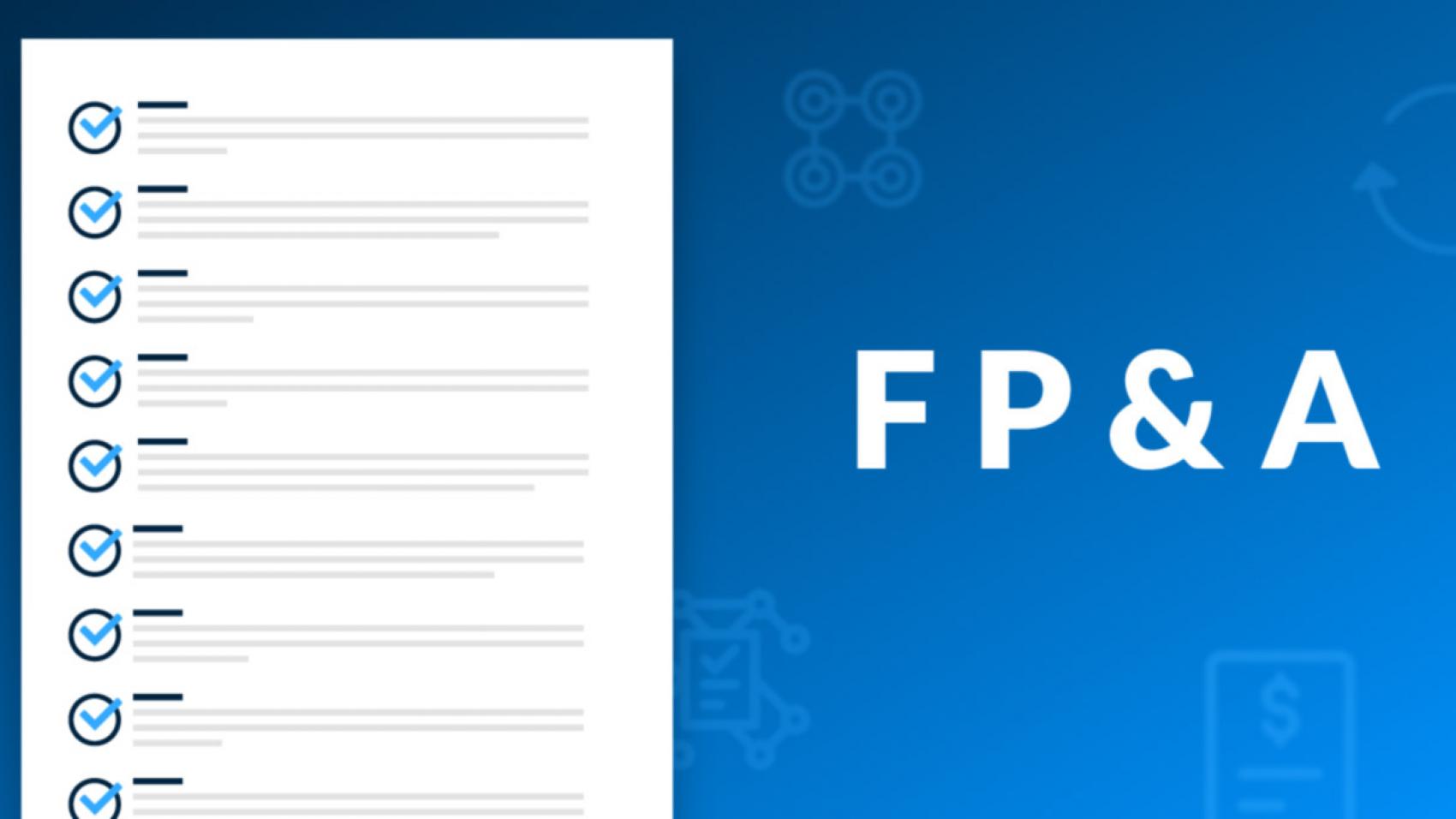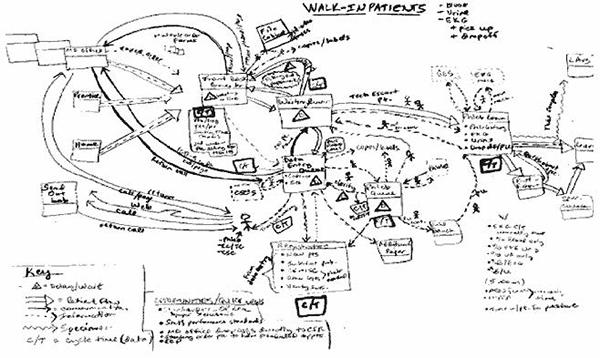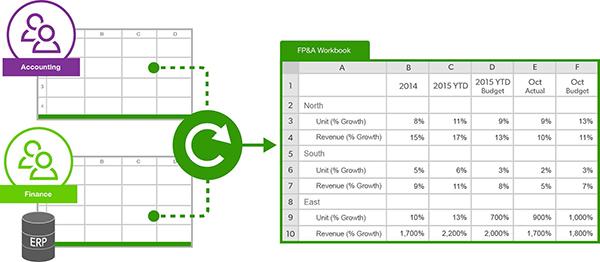9 Steps to Simplify Your FP&A Process

Ten days.
What would you do with an extra 10 days for anything, especially when you're on deadline to prepare numbers to present to your CFO and the board?
If you've visited this blog before, you've probably read a lot about connecting data and simplifying financial reporting. But, what would it mean for financial planning and analysis (FP&A) processes, if you could connect data sources to final reports?
Put simply, it means spending less time preparing a given report that meets your requester’s needs—whether that requester is internal or external. For one global conglomerate's corporate FP&A team, it meant using the Workiva connected reporting platform to save 10 days in their quarterly operating cash flow performance reporting process—readying a draft in four days, down from 14.
That gave the team 10 more days to...
-
To analyze the key drivers of performance
-
To review with business unit FP&A teams
-
To review results across the corporate accounting, tax, and treasury teams
-
To perform quality reviews to assure the accuracy of the presentation and messaging to be presented in the team's finite time in front of the CEO and CFO
-
To organize and communicate the business' story
The benefits are self-evident. First, you and your team will save time in preparation. Second, you’ll be able to deliver great financial reports quickly. These will feed the processes that help your FP&A team become a world-class finance organization. Fast, accurate reporting gives executives more information to aid their decision-making, yet 37% of business partners are technology constrained, meaning they do not have the tech savvy tools and resources to fully exploit the data they have. Worryingly, this has increased from 34% in 2019, according to a 2022 survey by FSN.
In this blog post, we highlight the universal reporting challenges faced by finance teams, discuss strategies and best practices for improving the overall reporting process, and provide suggestions on how to apply the framework to your FP&A process.
Universal reporting challenges
If your company is like most, you report on a complex corporate environment with multiple business units and legal entities.
According to an EY Global Financial Accounting Advisory Services group study, 82% of the 500 enterprises surveyed have more than five business units, while 50% have more than 10 units.
And, these business units typically rely on multiple systems for their reporting data. EY found that 74% of the enterprises surveyed relied on more than six reporting systems—such as ERP, SAP, and ledger systems—while 20% had more than 15.
All of these legal entities, business units, and reporting systems are in a constant state of change to meet stakeholder demands.
The volume and frequency of reports have also been steadily increasing. According to the EY study, 69% of external stakeholders also want more frequent reports.
Government regulations are on the rise, and the U.S. Department of Justice, the SEC, and other entities are increasingly holding individuals personally liable for reporting failures and errors. In fact, The SEC reported that the commission filed 760 enforcement actions and recovered a record $6.4 billion in penalties and disgorgement on behalf of the investing public in FY22, indicating compliance for government entity reporting is more important than ever.
How connected cloud solutions are streamlining the FP&A process
A fundamental problem for reporting managers and FP&A analysts is that the primary desktop-based FP&A tools they use to do their jobs, including business intelligence (BI) tools, have not kept pace with operational planning reporting requirements and rising FP&A trends.
These tools were never designed to handle the complexities of business reporting. Instead, they bring their own set of challenges, including:
-
Accessibility issues
-
Version control issues
-
Lack of true collaboration
-
Security issues
-
Lack of consistency
-
Lack of efficiency
-
No accountability
-
Complex training and IT assistance
Sound familiar? It’s not surprising that 60% of the respondents to EY’s survey said they agreed or strongly agreed that their organizations' financial reports did not contain the right information.
Weak reporting and data aggregation tools result in substantial non-value add time spent by your team to make up the financial planning and analysis tool gap. How much time do your FP&A analysts spend reconciling the same numbers across multiple reports? How about copying and pasting tables? Reformatting reports or slides? Mitigating the high risk of error?
And, how do all of these factors affect team stress levels and employee retention?
Accenture reports that about 80% of the finance organization's time is spent chasing data, correcting errors, and validating information—versus enhancing the business value of the information they're delivering.
How to improve your FP&A process
At Workiva, we’ve developed an overall approach to simplifying reporting processes based on our work with thousands of customers. It typically begins with simple but important questions. Here, we break it down as it relates to financial planning and analysis teams.
Step 1: Understand report objectives
Understanding the FP&A report objectives is crucial to ensuring the rest of your process and timeline goes smoothly. To do so, ask yourself these questions:
-
What is the purpose of the report? Is the information relevant?
-
What source information is necessary, and what is extraneous? Is the source information shared with any other reports?
-
Who receives the report?
-
Does information in a particular report overlap with other reports? Can similar reports be consolidated into one?
Understanding and knowing the answer to these common FP&A questions sets you up for success in the next steps.
Step 2: Map your FP&A team’s reporting process
Next, map your FP&A department’s process from start to finish in a process flowchart. A whiteboard is particularly useful for this purpose. Identify the inputs and outputs of who is involved both in and outside of your team and how everything is connected. Make sure you know which business partners receive the report, why, and how frequently. And lastly, find out how many hours it takes your FP&A team to produce outputs. Don’t be surprised if the resulting diagram of your financial reporting structure looks like this:
Now that you understand what goes into the report, you can begin to transform the financial reporting process into something that benefits you.
Step 3: Collect and normalize data
Normalize your data during the collection process. Create templates for operational review reports, cash flow forecasting, income statements, and balance sheets where all contributors can submit their data in the same format. Templates can be used for both unstructured and structured data.
Step 4: Organize information
Organize source data into a central location, so reporting teams can maintain control over the extensive, continuously changing information needed to meet evolving stakeholder reporting requirements. For additional control, link data straight from templates into the central location, so the repository is always up-to-date with data from the field.
Step 5: Create a single source of truth
Eliminate too many moving parts. Establish a linked approach between source data and all of its destinations. Link from your central location out to individual reports, connecting silos of information across the enterprise. By connecting the data in this way, changes can propagate through all destinations. This enables you to update your income statements, cash flow statements, balance sheets, or financial forecasts precisely and accurately.
Establishing a single source of truth for your reports is critical. It not only eliminates errors and reduces non-value add time, but it also provides audit trail evidence and gives greater confidence up the approval chain. It enables you and your team to create an auditable process that provides visibility into data linking, formatting, and changes.
Step 6: Collaborate in real time
Real-time collaboration allows users to work in parallel. Establish technology that allows FP&A managers, financial analysts, and other key FP&A professionals to work on separate report sections concurrently, without version control issues.
Step 7: Review, approval, and sign-off
Establish a review process where project teams can review contributor feedback from FP&A directors, managers and analysts in real time in one active document. Having one active document enables geographically distributed FP&A teams to work together while building a cohesive story for management, stakeholders, and the board.
Step 8: House final reports in one location
Provide an environment where you can leverage your certified and trusted source information and have it publish to narrative reports, dashboards, workbooks, and presentations. Again, this simplifies the FP&A process and reduces non-value add time.
Step 9: Leverage technology to improve your process
So, this sounds great, but how do you do that with traditional office software? Answer: You can’t! The good news is that there are software as a service (SaaS) business reporting solutions like Workiva’s FP&A cloud reporting software which enables you to take these steps.
Applying the framework to your FP&A process
Here are a couple of ideas and suggestions for applying this framework to your organization and evolving your current FP&A reporting process.
First, leaders set the tone for the team and for change. Be a thought leader, and help drive change in your organization.
Second, identify key, high-frequency reports—such as month end reports, financial modeling, or board presentations—that could benefit from process improvement.
Third, listen! Listen to your requesters/business partners. What do they actually need? Challenge them! Listen to your financial planning team—get them involved. How are your FP&A analysts actually preparing these reports? Why do they do it the way they do? Get their input, feedback, and ideas to help obtain their buy-in. Keep your FP&A department engaged and involved with the changes.
Finally, implement process improvements to your FP&A roadmap in phases. Be realistic—see what works and what doesn’t. Re-evaluate reporting processes with your FP&A analysts, managers, and chief financial officers. Remember, process improvement is always a work in progress. Strive for continual improvement in both your process and financial reports.
Real-world benefits of FP&A process improvement
By following the steps above, you can see true gains from a more streamlined process. It's proven.
We commissioned Forrester Consulting to determine the Total Economic Impact (TEI) for several companies that transitioned from Excel® spreadsheets and Word® documents to the Workiva platform. The results were dramatic.
A major airline that relied heavily on antiquated physical paperwork along with external professional service firms decided to move to the Workiva connected reporting and compliance platform. The team used Workiva solutions for internal and external financial reporting, management reporting, board reporting, and sustainability reporting. The airline found that Workiva not only provided version control and better tracking, but that it shortened the time required to produce reports, enabling better deadline management.
Forrester determined that the airline’s ROI was 187%, with payback in less than three months. In addition, the airline reduced its security risks by using a cloud platform that is FedRAMP-authorized at the moderate security impact level and trusted by thousands of organizations, including federal, state, and local government teams.
Similarly, a multinational manufacturer who relied on a patchwork of emails, external services, and desktop-based spreadsheets and text documents to manage its FP&A processes—compiling a typical financial report involved sorting through some 600 emails with attachments—also adopted the Workiva platform as their FP&A software. In doing so, it saw improvements in version control, its ability to collect data from numerous sources, and collaboration, and also refined its security posture in handling sensitive data. Forrester estimated the company had a 108%ROI with a payback in two months. Overall, its data aggregation workload was reduced by 90%.
What's next for your FP&A department?
We hope this article has given you an appreciation of universal reporting challenges and the strategies that you can use to improve your organization’s FP&A process. For more information, check out a few of our other resources on process improvement.
Interested in learning more about how Workiva can help improve your FP&A process? Request a demo with a Workiva representative today.
Excel and Word are registered trademarks of Microsoft Corporation in the United States and/or other countries.
Don’t wait! Register for a free Amplify account and stream select sessions until Oct. 31, 2023. Explore how financial reporting, ESG, and GRC intersect.
A Practical Guide to Process Improvement
Learn how to effect positive change and improve processes in your organization.




